SwiftSHRED ECM Series, Part VI
Intelligent Information Management
Slaying the Dragon
We all know the fairy tale… The brave knight challenges the fierce dragon, who has been sleeping on top of an immense and unclaimed treasure. By slaying the dragon, the knight captures the gold and the glory that everyone else has been too afraid to attain or even attempt. This fairy tale is an analogy for modern business practices: organizations that utilize ECM are the sleeping dragons and their content is the unused and wasted treasure. In the coming years, Intelligent Information Management (IIM) will play the role of the knight.
One theme of this ongoing Enterprise Content Management Series that we’ve emphasized is that all data has a lifecycle. So too does ECM, and its lifecycle is coming to an end. So why were the last five installments series dedicated to ECM? Because, even though the terminology will change, conceptual familiarity is necessary for optimal organizational performance. ECM must be achieved in order to evolve into IIM.
The reason ECM is being phased out as a term is because of emerging technological trends like IoT, data-centric metadata management tools (Hadoop, NoSQL, Blockchain), cloud content management solutions that are being incorporated into file platforms, the push for digital and the need for on premise legacy systems to move to the cloud1 These technological advances will change the way we look at information and the data continuum. The data lifecycle will be much shorter and it will become more dynamic. The enterprise content, itself, will also morph, especially with the implementation of artificial intelligence. In this data-driven age content is a valuable commodity and it must be protected. With these IIM advances, enterprise content will not only be protected – it will be put to work.
Intelligent Information Management Model
One way to think about the IIM Model is to conceptualize it as one brain. The brain performs many functions and the different parts of the brain regulate different life functions (the temporal lobe handles emotion, associations and equilibrium, while the occipital lobe handles sight and recognition, while Broca’s area handles speech functions, etc.2). All the brain functions just seem to be happening and that’s because of the immediacy with which our brains operate. There is so much information constantly coming at us. Our brains sort it all and focus only on the things that are relevant to the task at hand, whatever that may be. The brain is continuously reacting to outside stimuli. It’s a little surreal to think about, but this is the way that organizations will operate with IIM systems. There will still be separate specialized enterprise areas, but they will become completely fluid. IIM will become the central nervous system of any successful and innovative organization in the coming decades.
Modernize, Digitize, Automate & Leverage
According to AIIM (the Association for Intelligent Information Management), there are four key actions that must be taken to enable IIM to happen; modernize the information toolkit, digitize core informational processes, automate compliance and governance and leverage analytics and machine learning.
IIM Solution Software & Service is a growing sector with a range of capabilities available, but there is no one solution or combination of solutions that will work for every organization. It’s not one-size-fits all, so you should be prudent and focus on what it is your organization is trying to accomplish. When choosing an IIM software or service you shouldn’t focus on the suite capabilities that are available. You should focus on what’s required and absolutely necessary before you invest.
ECM is the essential first phase of IIM. It cannot and should not take place without mastering the four main areas of ECM; Imaging, Workflow, Records Management and Enterprise Relationship Management. As the information age rolls on, the changes to business operations are really unknowable. Human work arenas have developed, from farming for most of history, to factory, to office, to the mobile workforce. In recent years there has been much speculation as to the effect artificial intelligence will have on our organizations. Here are two major questions:
What kind of impact will automation have on future work opportunities for individuals?
How will AI automation affect the very nature of work?
“Nothing is written.”
-Lawrence of Arabia
It is impossible to predict the future with any accuracy, but there is no debate that artificial intelligence is starting to reshape the ways businesses approach their operations as seen through the ECM evolution and the more proactive IIM advances. Organizations will become better and better at optimizing their data and using it to develop a more fluid approach. Rather than locking it all in a vault to be opened periodically, content will be used to create more content and the barriers between an organization, its partners and its customers will shift as well. Complex inter-relationships will be established and automatically updated to maintain the functions of the organization at large. Artificial Intelligence will make this dynamic change a near constant occurrence and Intelligent Information Management will be leveraged to make this happen. It will be interesting to see how these operational changes will be adopted, and how new organizational formations will manifest over the next few years. With such dynamic and sweeping changes, new opportunities for individuals are bound to present themselves as well.
- Mancini, 2018 ↵
- Cognifit, n.d. ↵

